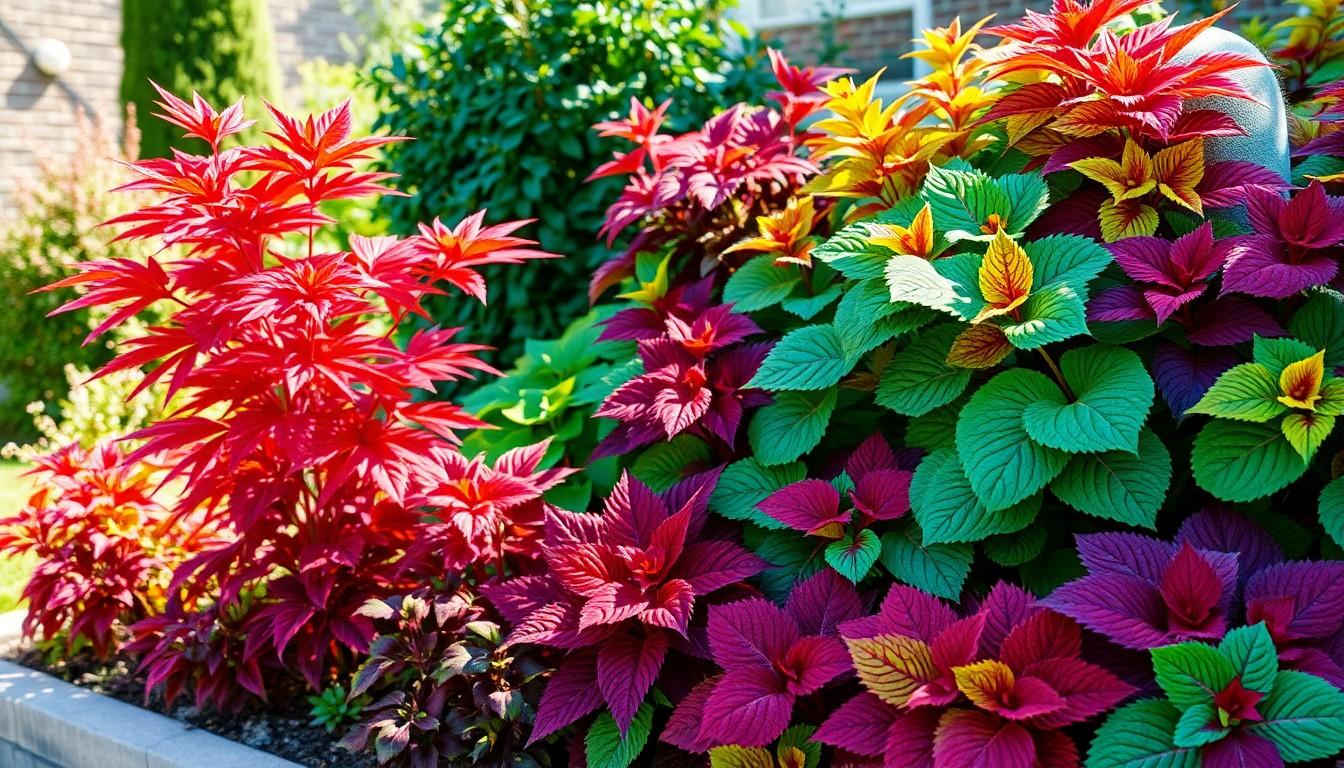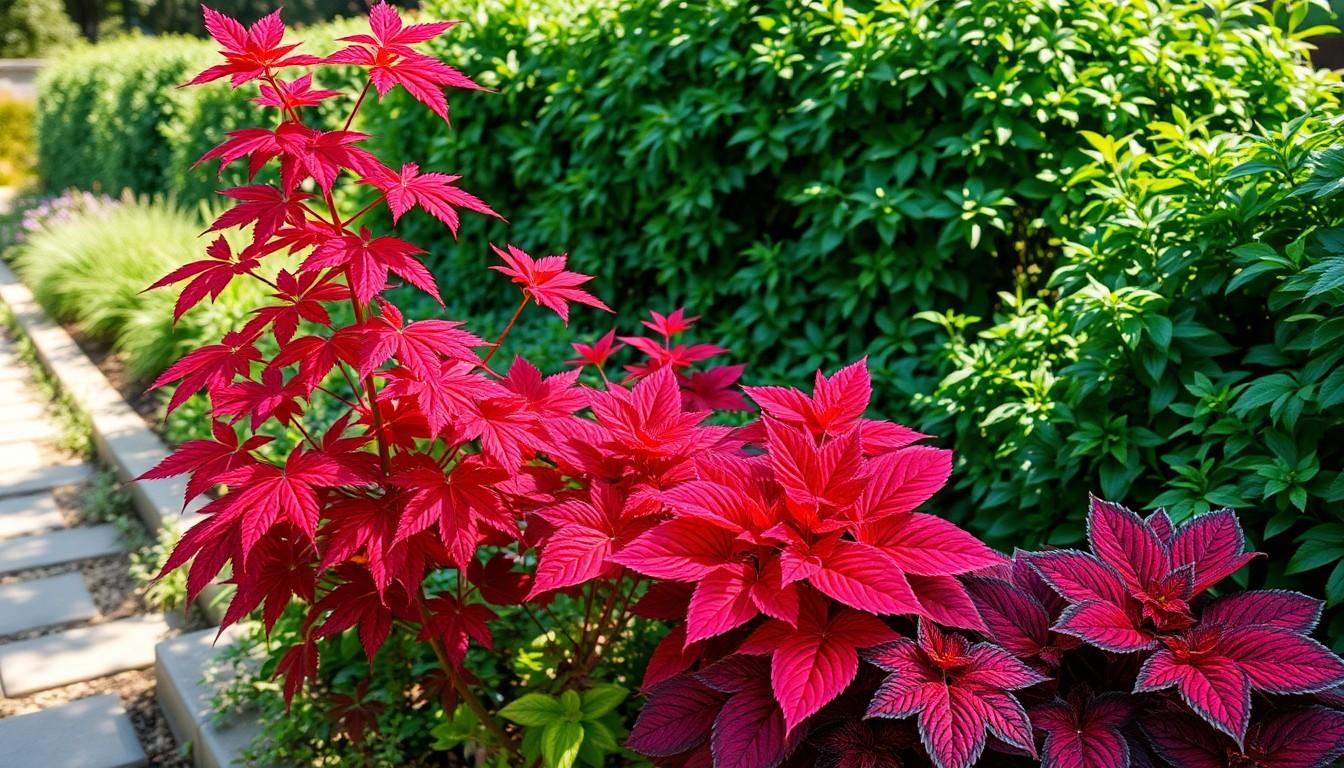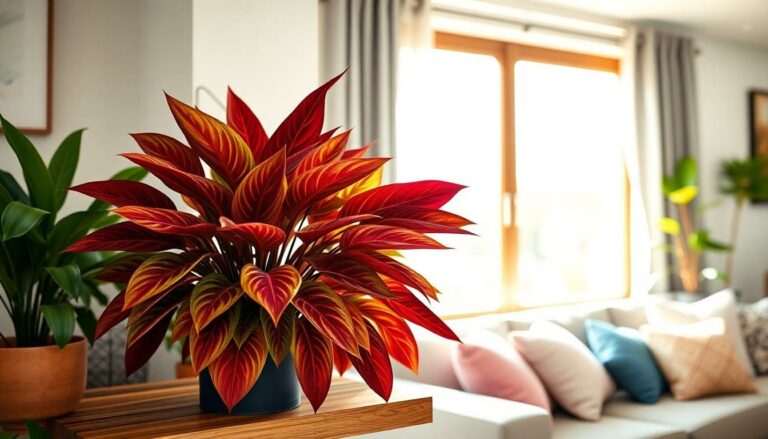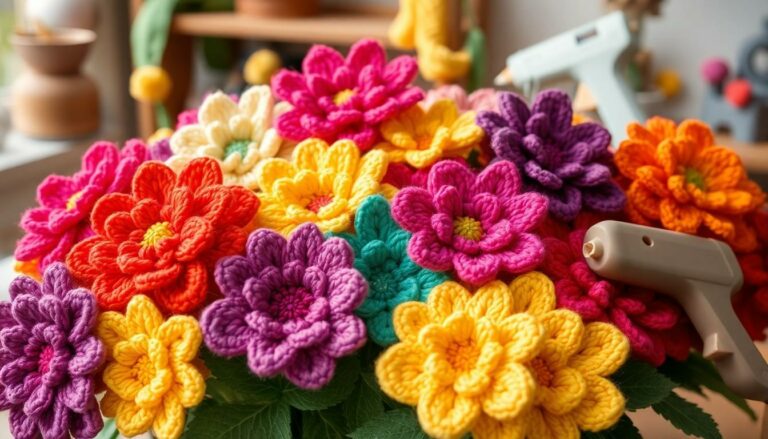Ever wandered through a garden and spotted a striking red leaf plant that made you do a double-take? Those vibrant hues can turn any dull corner into a dazzling display. But with so many varieties out there, identifying these leafy wonders can feel like solving a botanical mystery. Fear not, plant enthusiasts!
Understanding Red Leaf Plants
Red leaf plants captivate gardeners with their bold colors and unique textures. Recognizing these plants requires familiarity with their distinct features and varieties.
Characteristics of Red Leaf Plants
Bright colors often mark red leaf plants, signaling the presence of anthocyanins. These pigments provide vibrant hues, especially in sunnier conditions. Leaf shapes and sizes vary widely, presenting opportunities for creative garden designs. Sturdy stems support lush foliage, and some varieties produce stunning flowers that complement their leaves. Understanding these characteristics helps identify the right red leaf plants, whether for a shaded corner or a sun-drenched bed.
Types of Red Leaf Plants
Numerous types of red leaf plants populate gardens and interior spaces. Coleus features vibrant, multicolored leaves that thrive in shade. Japanese Maple displays stunning red foliage that changes shades through the seasons. Red Drift Rose showcases beautiful blossoms framed by deep green leaves with red-tipped edges. Bloodleaf stands out with its large, serrated red leaves, perfect for adding drama. Each plant type contributes uniquely to landscape aesthetics and requires specific care approaches for optimal growth.
Common Red Leaf Plants to Identify

Various red leaf plants offer vibrant hues and enhance garden aesthetics. Identifying these plants enriches the gardening experience.
Japanese Maple
Japanese Maple showcases stunning red foliage, particularly the ‘Bloodgood’ variety. This tree thrives in partial shade and well-drained soil. Foliage color intensifies with the season, peaking in fall with bright red shades. Elegant in design, it serves as a focal point in small gardens.
Red Leafed Heuchera
Red Leafed Heuchera, commonly known as coral bells, captivates with its deeply lobed leaves. Varieties such as ‘Firefly’ and ‘Caramel’ display striking red to burgundy hues. This perennial prefers partial shade and well-drained soil, making it a versatile choice. Additionally, it produces delicate flower spikes, adding further visual interest to garden beds.
Coleus Varieties
Coleus varieties like ‘Wizard Scarlet’ and ‘Kong Red’ offer bold, colorful foliage. These annuals thrive in both full sun and partial shade, adapting to various garden styles. Their leaves feature intricate patterns, enhancing garden aesthetics significantly. Easy to care for, they require regular watering to keep the foliage vibrant and healthy.
Tips for Identifying Red Leaf Plants
Identifying red leaf plants involves careful observation and understanding of various characteristics. Recognizing key features helps in accurately distinguishing between different species.
Observing Leaf Shape and Size
Leaf shape and size play critical roles in plant identification. Heucheras typically exhibit lobed leaves with serrated edges. Japanese Maples present a variety of leaf shapes from palmate to dissected. Coleus varieties often have wider leaves with distinct patterns. Observing these traits, including the overall dimensions of the leaf, can aid in recognizing specific plants. Comparing these characteristics against a reliable guide or database ensures precise identification for garden enthusiasts.
Seasonal Color Changes
Seasonal color changes significantly impact the identification of red leaf plants. Certain species, like the Japanese Maple, display brilliant red hues in fall, while others may shift to green or gold. Some Coleus varieties maintain their vibrant colors throughout various seasons, making them easily recognizable. Noting these transitions assists in distinguishing plants based on their seasonal behaviors. Understanding these changes enriches the knowledge of how red leaf plants develop and thrive in different environments.
Common Mistakes in Plant Identification
Identifying red leaf plants can be tricky. Several common mistakes often lead to confusion.
Confusing Red Leaf Plants with Similar Species
Many people confuse red leaf plants with similar species. For instance, the Red Maple and Japanese Maple may appear alike, yet their growth habits differ. Coleus plants often get mixed up with related varieties, like those with green foliage. Close inspection of leaf shape, texture, and growth patterns reveals differences. Understanding these distinctions ensures better identification.
Misidentifying Based on Color Alone
Color can be misleading in plant identification. Some plants display red hues at certain times but might not be red leaf plants overall. For example, seasonal changes affect foliage in species like the Sumac, which can turn bright red in autumn. Factors like light exposure can also cause color variation in plants. Relying solely on color can lead to misidentification and misunderstanding. Observing other characteristics is crucial for accurate identification.
Conclusion
Red leaf plants bring a unique charm to any garden with their vibrant colors and textures. By understanding their specific characteristics and seasonal changes, plant enthusiasts can confidently identify and care for these stunning specimens. Observing details like leaf shape and growth patterns is essential for accurate identification. With the right knowledge and attention, anyone can enhance their landscape with the beauty of red leaf plants, creating a striking visual impact that lasts throughout the seasons. Embracing this botanical journey not only enriches the garden but also deepens the appreciation for nature’s artistry.




